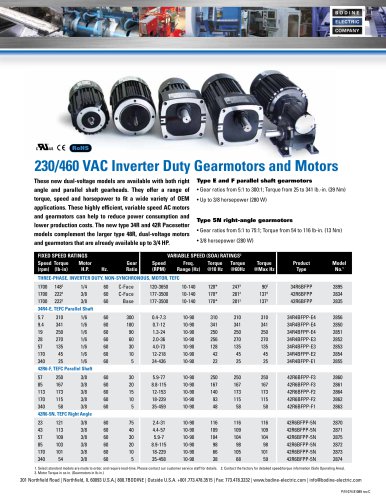 Website:
BODINE ELECTRIC COMPANY
Website:
BODINE ELECTRIC COMPANY
Catalog excerpts

For up-to-date product information, 2D/3D CAD drawings, or to order online, please visit www.bodine-electric.com 201 Northfield Road Northfield, Illinois 60093 U.S.A. Phone: 773.478.3515 | 800.7BODINE | Fax: 773.478.3232 www.bodine-electric.com | info@bodine-electric.com Copyright Notice: Small Motor, Gearmotor and Control Handbook Copyright Bodine Electric Company. All rights reserved. Unauthorized duplication, distribution, or modification of this publication, in part or in whole, is expressly prohibited.
Open the catalog to page 1
Electric Motor Fundamentals Electric motors are designed to convert electrical energy into mechanical energy to perform some physical task or work. In order to understand the types of motors that are available as well as their performance characteristics, some understanding of the basic physical principles governing motor design and operation are required. Basic electric motor design encompasses the laws of electricity and magnetism. Motor feedback and control systems involve semiconductor devices, microprocessors and other elements of electronics. And no discussion of motors would be...
Open the catalog to page 2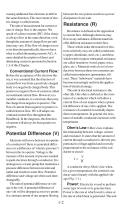
causing additional free electrons to drift in the same direction. This movement of electric charge is called current. The unit of measurement for current or rate of charge flow is the ampere. We speak of a direct current (DC) if the charges always flow in the same direction, even though the amount of charge flow per unit time may vary. If the flow of charge reverses its direction periodically, then we have what is called alternating current (AC). A more detailed description of direct and alternating current is presented in Section 1.3 of this Chapter. Conventional Current Flow: Before the...
Open the catalog to page 3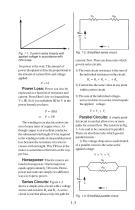
Fig. 1-2: Simplified series circuit. Fig. 1-1: Current varies linearly with applied voltage in accordance with Ohm’s law. for power is the watt. The amount of power dissipated is directly proportional to the amount of current flow and voltage applied: P = VI curremt flow. There are three rules which govern series circuits. 1) The total circuit resistance is the sum of the individual resistances in the circuit: RT = R1 + R2 + ... + RN Power Loss: Power can also be 2) Current has the same value at any point within a series circuit. expressed as a function of resistance and current. From Ohm’s...
Open the catalog to page 4
2) The total current in a parallel circuit is equal to the sum of the branch currents: I = I 1 + I2 where I1 and I2 are currents flowingpart of through R1 and R2 respectively. 3) The total resistance in a parallel circuit is always less than or approximately equal to the value of the smallest resistance in any branch of the circuit. Since I = I1 + I2 you can substitute V -- in place of I and arrive at: R V V V -- = --1 + --2 RT R1 R2 Q, measured in coulombs, is the charge stored in the capacitor. One coulomb has an equivalent charge of about 6.24 x 1018 electrons. The unit of capacitance...
Open the catalog to page 5
Fig. 1-5: Increased capacitance with dielectric. It is also known that if a dielectric such as glass is placed between the plates (Fig. 1-5), the capacitance is increased five to ten times. In varying degrees, putting materials like mylar, mica, wax or mineral oil between the plates will all result in higher capacitance. Different insulating materials (dielectrics) offer different increases in capacitance. The ratio of the capacitance with the dielectric to that without the dielectric is called the dielectric constant (k) of the material. A vacuum has a dielectric constant: k=1. Dielectrics...
Open the catalog to page 6
Fig. 1-7: Curves for Q and I during charging. Fig. 1-8: Curves for Q and I during discharging. Time Constant: The time it takes a capacitor to charge to 63% of the supply voltage is called the capacitive time constant (T). It can be calculated using the formula: T = RC A capacitor discharges in a similar manner as shown in Fig. 1-8. The current is now negative, because it flows in the opposite direction during discharging. A capacitor is said to be fully charged or fully discharged after five RC time constants. The figures illustrate that current varies exponentially with time during the...
Open the catalog to page 7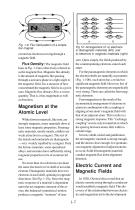
Fig. 1-9: Flux field pattern of a simple bar magnet. Fig 10: Arrangement of: a) electrons in diamagnetic materials (left), and b) electrons in magnetic materials (right). exerted on electrons moving through a magnetic field. Flux Density: The magnetic field lines in Fig. 1-9 are collectively referred to as the magnetic flux. Magnetic flux density is the amount of magnetic flux passing through a unit area plane at a right angle to the magnetic field. It is a measure of how concentrated the magnetic field is in a given area. Magnetic flux density (B) is a vector quantity. That is, it has...
Open the catalog to page 8
Fig. 1-11: Direction of flux flow with a) current flowing out of page (left), and b) flux flow with current flowing into page (right). of most of our modern electric machines. The magnetic field around a currentcarrying straight conductor takes the form of concentric cylinders perpendicular to the conductor. In Fig. 1-11, the current is shown emerging from the page and the flux lines, shown as concentric circles, are flowing counterclockwise. When the direction of the current is reversed, the flux lines flow clockwise. The right-hand rule, shown in Fig. 1-12, can be used to determine either...
Open the catalog to page 9
Fig. 1-15: Effect of an iron bar on a magnetic field. variety of other ferromagnetic alloys and compounds are excellent magnetic conductors with high permeability. Permeability and Magnetic Field Strength: Permeability (µ) is a measure of how well a material will conduct magnetic flux. It is related to magnetic flux density (B) and magnetic field strength (H) in the following equations: and where µo = 4π x 10-7 (in SI units) and µr is the relative permeability with a value of unity (1) in free space. The magnetic field strength (H) is measured in amperes per meter. The following formula...
Open the catalog to page 10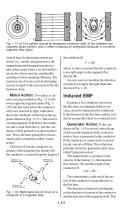
Fig. 1-17: a) Flux pattern around an energized conductor (left), b) flux between two magnetic poles (center), and c) effect of placing an energized conductor in a uniform magnetic field (right). form of heat. In alternating current machines (i.e., motors and generators), the magnetizing and demagnetizing process takes place many times a second and hysteresis loss (heat) may be considerable, resulting in lower operating efficiency. The hysteresis loss for one cycle of alternating current is equal to the area enclosed by the hysteresis loop. Motor Action: If we place a current-carrying...
Open the catalog to page 11All BODINE ELECTRIC COMPANY catalogs and technical brochures
-
PLANETARY BLDC GEARMOTORS
2 Pages
-
Standard Products
4 Pages
-
42R-FX AC Gearmotor
2 Pages
-
DC control selection guides
12 Pages
-
AC control selection guides
3 Pages




















